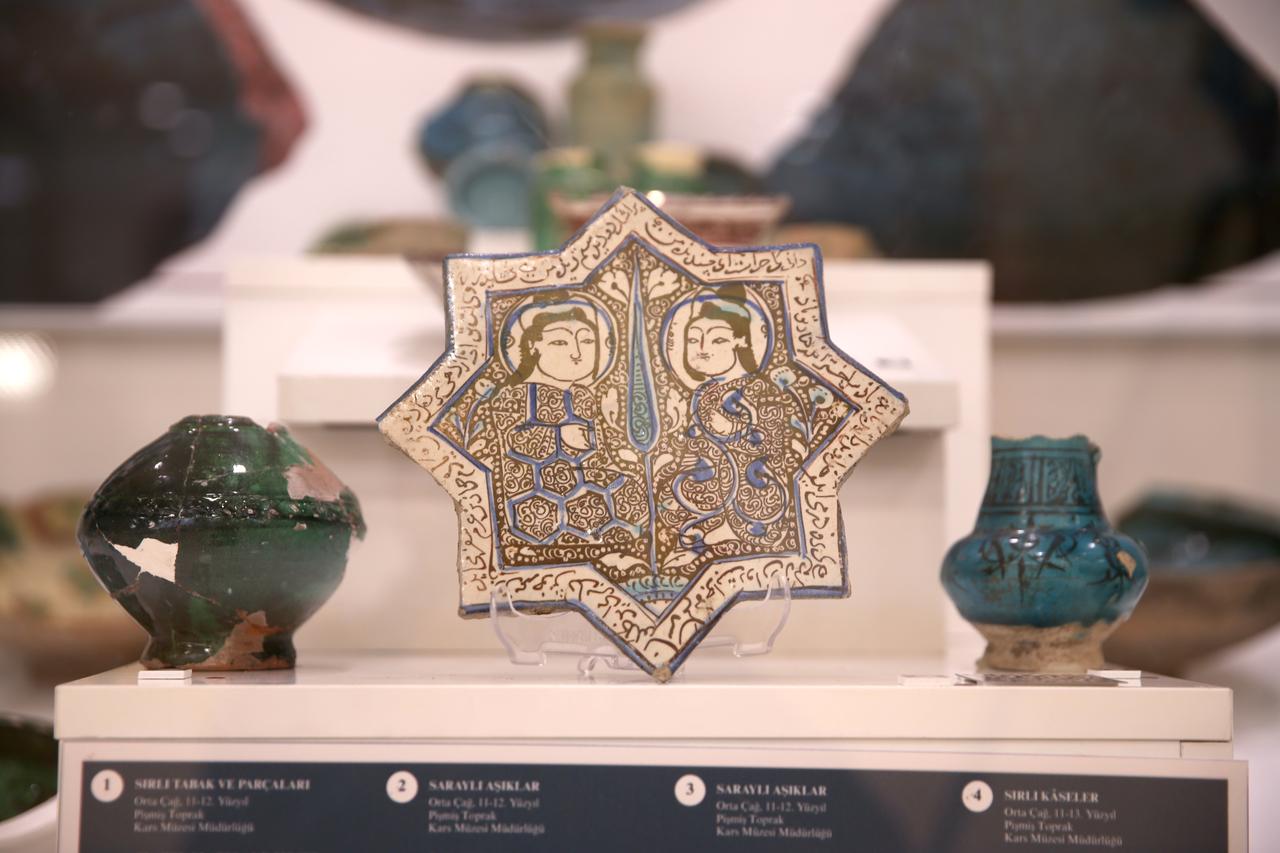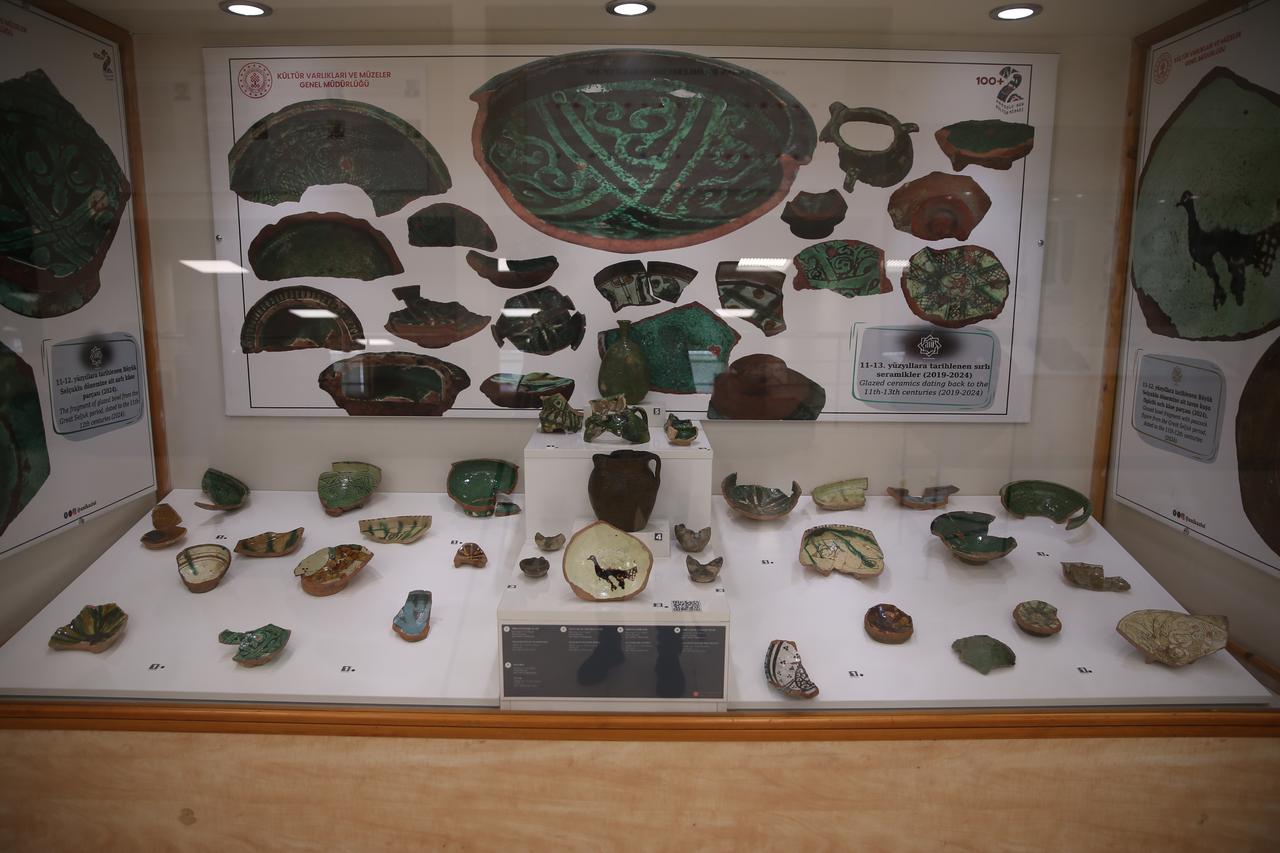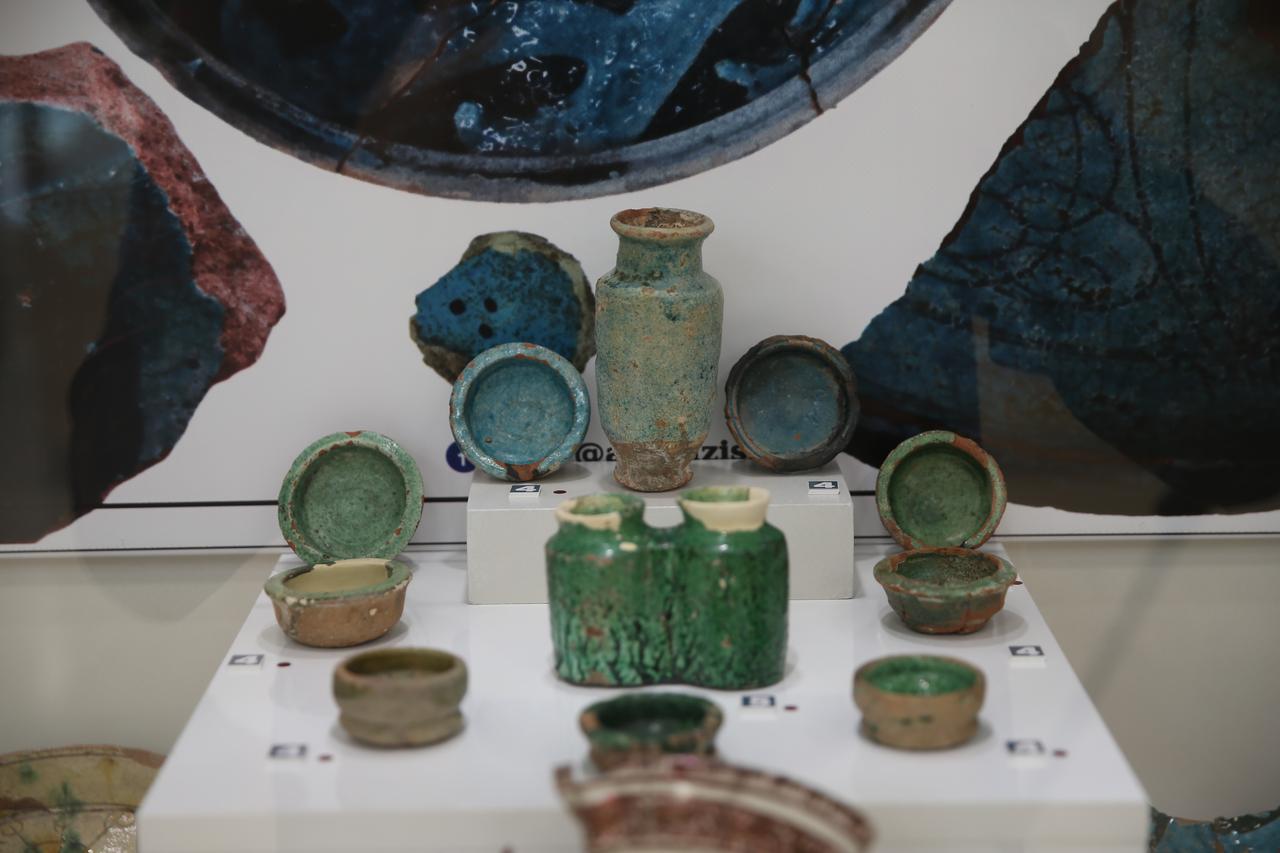
Glazed ceramics recently discovered during archaeological excavations at the ancient city of Ani in eastern Türkiye have gone on public display for the first time at the Kars Museum of Archaeology and Ethnography. The exhibition showcases a collection of uniquely decorated ceramic fragments featuring botanical motifs, geometric patterns, and human figures.

Located along the Arpacay River—which today marks part of the border between Türkiye and Armenia—Ani once stood at a strategic crossroads between the Caucasus and Anatolia. The city was ruled by the Bagratid dynasty from 884 to 1045, before coming under Byzantine control until 1064, when it was captured by Sultan Alp Arslan of the Seljuk Empire.
Throughout its long and layered history, Ani served as home to at least 23 civilizations. Its remains include religious and architectural landmarks such as mosques, churches, and cathedrals. Known as the "Gateway to Anatolia from the Caucasus," the site is a testament to centuries of cultural exchange and political transition.

Among the artefacts recently unearthed at the site are fragments of “sirli seramikler”—glazed ceramics—dating back nearly a millennium. Two display cases filled with these items have now been installed at the Kars Museum, where they will remain open to visitors year-round.
Museum director Hakim Aslan explained that the glazed pieces include significant examples from the medieval period, with many belonging to the Seljuk era. These ceramics feature vivid tones of green and cobalt blue, alongside artistic decorations that reflect both regional styles and symbolic traditions.
According to Aslan, some of the most striking pieces on display are associated with an iconographic theme known as the "courtly lovers." One ceramic piece, in particular, shows a central tree of life motif flanked by human figures. Around the edges of the object, inscriptions in Persian and Arabic frame the scene, one of which contains a love poem.

In addition to the more symbolic or artistic items, the collection includes everyday objects, such as small glazed vessels likely used for storing spices. Aslan noted that these kinds of kitchen-related artefacts are rarely found in similar condition, making their inclusion in the exhibit noteworthy.
The exhibition has reportedly attracted increased interest from both domestic and international visitors since its opening. According to the museum, the display of Ani’s medieval ceramics has already contributed to a noticeable rise in visitor numbers.